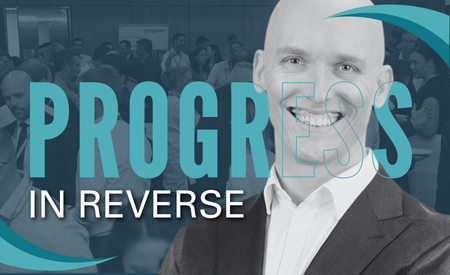November 2025
Progress in reverse

Jonathan Cartledge, Chief Executive Officer, Consult Australia
Whether it’s about our low-carbon future, a more diverse and inclusive workforce, or more homes where people need them, real progress starts the same way: set a target, then work backwards to make it happen.
Too often, though, we get stuck debating the targets themselves – their timing, merits, ambition or political palatability – and lose sight of the vision they’re meant to serve. Without that vision, targets become hollow. And without targets, vision remains just talk.
When designed well, specific, credible targets sharpen focus, improve performance and accelerate change. We can see this playing out in real terms. With a net zero target in place, clean energy now supplies more than 37% of Australia’s electricity. Among Consult Australia’s Champions of Change, 88% have set targets and timelines to close the gender pay gap and are making consistent, year-on-year progress. And with a coordinated national push toward 1.2 million new homes, dwelling approvals rose by 15% in the year to September.
None of these examples suggest a perfect outcome. But targets make priorities visible and hold people to account. They help governments plan, investors commit and businesses build.
However, targets only work when they’re backed by planning discipline and delivery clarity. And in the infrastructure sector, that’s where the gap is starting to show.
According to Infrastructure Australia's Infrastructure Market Capacity 2025 Report, the major public infrastructure pipeline has grown from $189 billion to $242 billion in just 12 months. On paper, that’s a 28% increase. But the composition of that growth is messy, reflecting a churn of projects being removed, added, rescheduled or re-costed.

Major Public Infrastructure Pipeline spend from 2024–25 to 2028–29,
changes from 2024 forecast to 2025 forecast
Source: Infrastructure Australia, 2025.
No firm is complaining about new projects coming to market. But for businesses trying to plan their workforce, this level of uncertainty makes it almost impossible to prepare.
Eyebrows will be raised at Infrastructure Australia’s forecast shortfall of 300,000 workers by 2027, including 126,000 engineers, architects and scientists. Consult Australia’s own Market conditions report tells a different story. Almost every respondent (97%) across all sectors reported having workforce capacity within the next six months. Some businesses have already redeployed staff, others have made resource cuts. This divergence speaks to the increasing disconnect between the aspiration of governments’ budget commitments and the reality of contracts delivering real infrastructure on the ground.
The figures and forecasts may be murky, but the underlying challenge is clear. We’re planning infrastructure that will shape lives for generations but we’re doing it on uncertain forecasts and timelines that barely look five years ahead and shift from year to year.
What does a better approach look like?
At the recent FIDIC Global Infrastructure Conference, I found myself speaking to these challenges with my counterpart from Denmark, relieved as he spoke to his government’s 10-year, €21.5 billion plan for infrastructure out to 2035 with funding agreed and passed by Parliament. It’s not just the scale of the Denmark Forward plan that is impressive – it’s the certainty. Businesses know what’s coming and when, which gives them time to invest in people, systems and innovation.
That’s what’s missing in Australia.
If we want world-class infrastructure and a skilled, inclusive workforce to deliver it, we need to set a 10-year funded vision and work backwards. Progress in reverse.